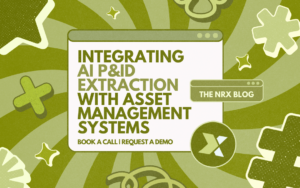Gartner predicted that more than 50% of large industrial companies will use digital twins, which would lead to a 10% improvement in effectiveness across maintenance strategies. This growing integration of digital twins and Risk-Based Inspection (RBI) is reshaping how industries approach safety-critical maintenance.

What Are Digital Twins?
Digital twins are virtual models that replicate physical assets. They integrate data from sensors, operational history, and environmental factors. These models help predict asset behaviour, which is especially valuable for safety-critical equipment. In enterprise environments using platforms such as IBM Maximo, digital twins can be linked to asset records. They reflect the condition of real-world equipment and allow users to simulate degradation or failure scenarios.
Safety-Critical Assets in Focus
Safety-critical assets are components whose failure could cause harm to people, the environment, or infrastructure. These assets often require rigorous inspection schedules. RBI helps identify and monitor these components using structured risk assessments. RBI evaluates two key factors: the likelihood of failure and the consequence of failure. This evaluation is dynamic and must evolve with operating conditions. That’s where digital twins provide major value.
Digital Twins + RBI: A Synergistic Approach
When digital twins are integrated into RBI workflows, risk assessments become more responsive. These models provide real-time feedback on equipment performance. They can automatically trigger reclassification of asset criticality when conditions change. For instance, if a heat exchanger shows signs of rapid corrosion, its digital twin can flag increased risk. This information is passed to the RBI model, which may update the inspection schedule and issue preventive maintenance tasks within the CMMS.

Migrating Inspection Programs
Organizations must first migrate from static and time-based inspection strategies to condition-based approaches. This involves restructuring asset hierarchies, validating FLOC data, and enabling real-time monitoring. Once migrated, digital twins work in tandem with CMMS platforms to schedule inspections based on actual equipment behaviour. Furthermore, they support predictive maintenance by identifying early indicators of failure.
Enabling Continuous Risk Assessment
Unlike traditional RBI programs that rely on periodic reviews, digital twin-enhanced RBI supports continuous assessment. This capability is essential for fast-paced industrial environments. Digital twins keep risk evaluations up to date, which make inspections more effective and ensure safety-critical maintenance keeps pace with change.
The Future of RBI in a Digitalized World
Digital twins and RBI are converging in ways that fundamentally improve safety and efficiency. These tools help organizations anticipate issues before they escalate. As digitalization efforts grow, maintenance strategies will increasingly rely on real-time intelligence rather than fixed schedules. In highly regulated industries such as energy, food, and pharmaceuticals, this shift will not only improve reliability but also protect public safety.
Conclusion
Digital twins represent a new frontier for safety-critical maintenance. When combined with RBI, they offer powerful insights that allow organizations to focus on the assets that matter most. By migrating inspection programs to digital platforms and embracing digitalization, businesses can reduce risk, increase uptime, and meet compliance demands more effectively than ever before.
Integrating AI P&ID Extraction with Asset Management Systems
ISO 14224 vs Other Maintenance Standards: What Sets It Apart?
Building Trust in Your Asset Data: Strategies for Governance
Share this article




